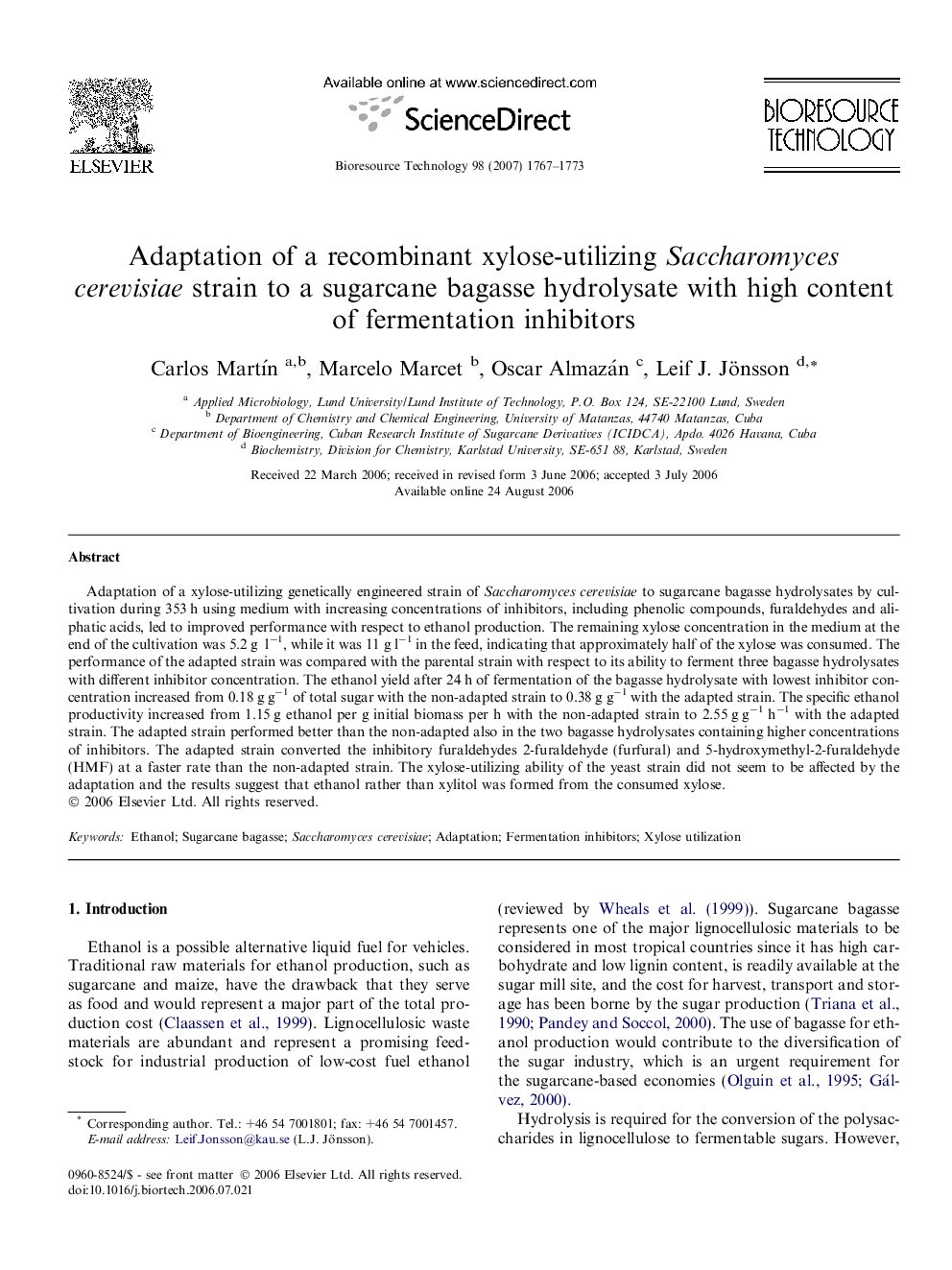| کد مقاله | کد نشریه | سال انتشار | مقاله انگلیسی | نسخه تمام متن |
|---|---|---|---|---|
| 686491 | 889080 | 2007 | 7 صفحه PDF | دانلود رایگان |

Adaptation of a xylose-utilizing genetically engineered strain of Saccharomyces cerevisiae to sugarcane bagasse hydrolysates by cultivation during 353 h using medium with increasing concentrations of inhibitors, including phenolic compounds, furaldehydes and aliphatic acids, led to improved performance with respect to ethanol production. The remaining xylose concentration in the medium at the end of the cultivation was 5.2 g l−1, while it was 11 g l−1 in the feed, indicating that approximately half of the xylose was consumed. The performance of the adapted strain was compared with the parental strain with respect to its ability to ferment three bagasse hydrolysates with different inhibitor concentration. The ethanol yield after 24 h of fermentation of the bagasse hydrolysate with lowest inhibitor concentration increased from 0.18 g g−1 of total sugar with the non-adapted strain to 0.38 g g−1 with the adapted strain. The specific ethanol productivity increased from 1.15 g ethanol per g initial biomass per h with the non-adapted strain to 2.55 g g−1 h−1 with the adapted strain. The adapted strain performed better than the non-adapted also in the two bagasse hydrolysates containing higher concentrations of inhibitors. The adapted strain converted the inhibitory furaldehydes 2-furaldehyde (furfural) and 5-hydroxymethyl-2-furaldehyde (HMF) at a faster rate than the non-adapted strain. The xylose-utilizing ability of the yeast strain did not seem to be affected by the adaptation and the results suggest that ethanol rather than xylitol was formed from the consumed xylose.
Journal: Bioresource Technology - Volume 98, Issue 9, July 2007, Pages 1767–1773